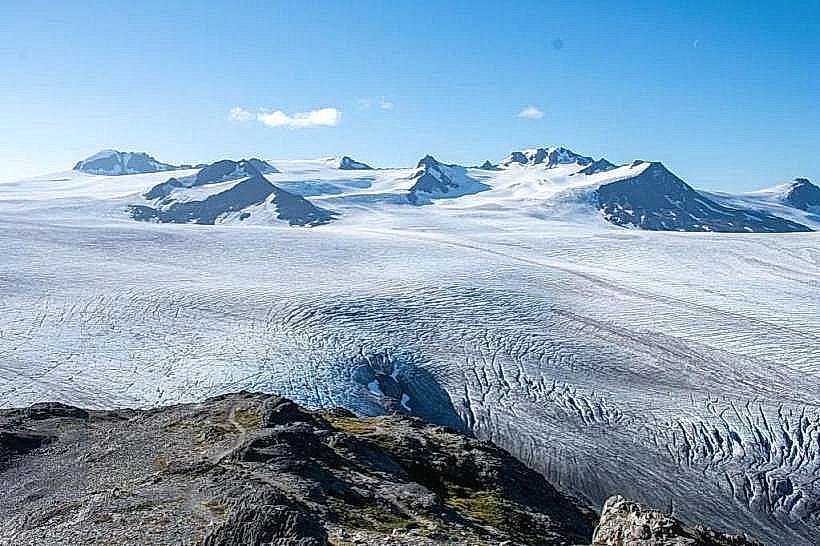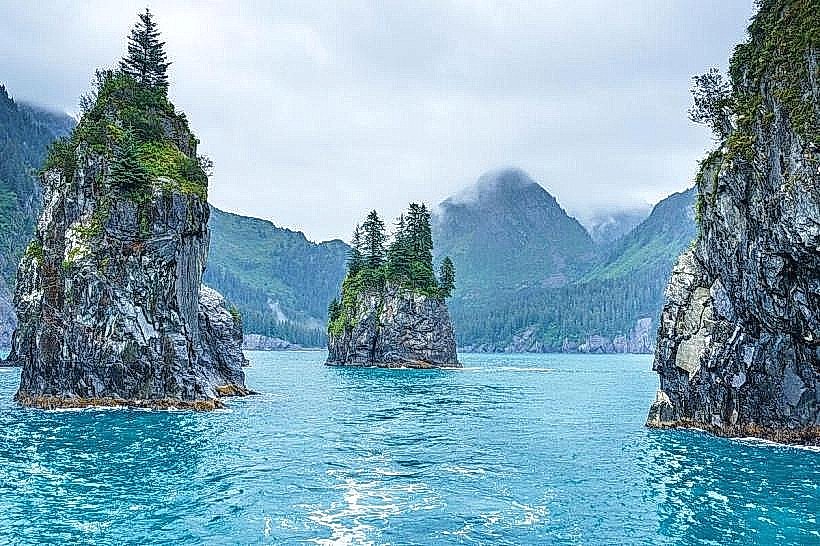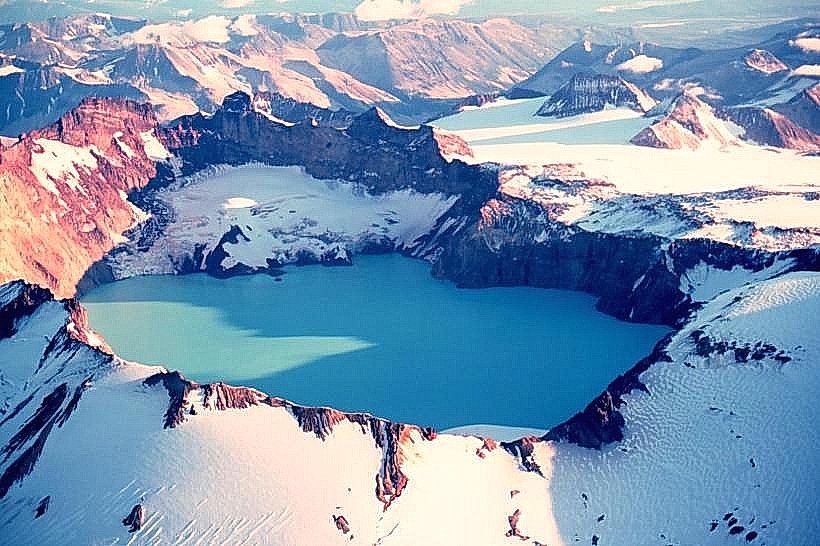Information
Landmark: Exit GlacierCity: Seward
Country: USA Alaska
Continent: North America
Exit Glacier, Seward, USA Alaska, North America
Overview
Tucked inside Kenai Fjords National Park in south‑central Alaska, Exit Glacier is one of the easiest glaciers to reach in the state-a shining blue wall that still shows how ice and time can carve a valley clean, on top of that only a short drive from the quiet coastal town of Seward, it’s the single stretch of the huge Harding Icefield you can reach by car, where the air smells faintly of sea salt and pine.The journey kicks off on Exit Glacier Road, a winding 13-mile stretch that breaks from the Seward Highway and runs past spruce trees and glinting patches of ice, at the same time the road twists through thick stands of spruce and alder, and the air turns crisp and freezing, carrying the faint scent of ice as you approach the glacier.At the Kenai Fjords National Park Visitor Center, displays chart how the glacier has pulled back over the years-roadside signs mark where its edge once stood, a quiet, unsettling reminder of a warming world, subsequently several trails branch out from the visitor area, inviting you to stroll along gentle paths or tackle steep climbs where the air smells of pine.The Glacier View Loop Trail offers an easy one‑mile wander, where you can observe the glacier’s lower tongue gleaming above silver threads of meltwater, equally important if you’re up for the climb, the Edge of the Glacier Trail draws you toward the end of the ice, where the glacier’s low groans echo and a sharp, nippy wind brushes your face.The rugged Harding Icefield Trail-an 8.2-mile round trip climbing roughly 3,500 feet-pushes every hiker hard, then pays them back with a breathtaking view of the vast white ice stretching to the horizon, at the same time when the sky’s clear, clouds slide lazily over the peaks, and the glacier below catches the light, flashing blue and silver like frosty glass.At Sights and Sounds Exit Glacier, the site hums with life-the ice creaks, meltwater runs, and the air seems to breathe, equally important meltwater rushes down the creeks, and the ice lets out sharp cracks as it shifts beneath the pale morning light.In early summer, fireweed and lupine flood the slopes with color, their glowing petals blazing against the glacier’s pale, icy shine, along with tiny moss patches grip the nearby rocks, holding on with damp green persistence-their own little worlds surviving at the glacier’s nippy edge.The glacier called Exit earned its name from the path it once offered early explorers as they made their way down from the Harding Icefield, crunching over the blue-gray ice toward open ground, also even so, today it feels like a quiet symbol of its own unhurried fade from the landscape, like paint peeling from an heritage fence.Since the 1800s, Exit Glacier has pulled back more than a mile, a retreat marked by trail signs that show where the ice once pressed against the rock, besides the retreat’s turned into a living classroom, where climate scientists and visitors trade ideas while the wind hums through the pines.The site stays open all year, but the access road usually shuts down in winter when deep snow covers the gravel, after that in summer, rangers guide visitors along the trails, pointing out how the glaciers shift and how the forest breathes around them, slightly Visitors often pair a visit here with spotting sea otters or joining a cruise through Resurrection Bay, where blue-white glaciers slide straight into the water, consequently standing before Exit Glacier, you feel both awe and fragility-the chill of ancient ice meeting today’s soft breath of warmth.The chilly bites at your skin, meltwater rumbles somewhere down the valley, and together they whisper how fleeting everything here in Alaska truly is.
Author: Tourist Landmarks
Date: 2025-11-07








